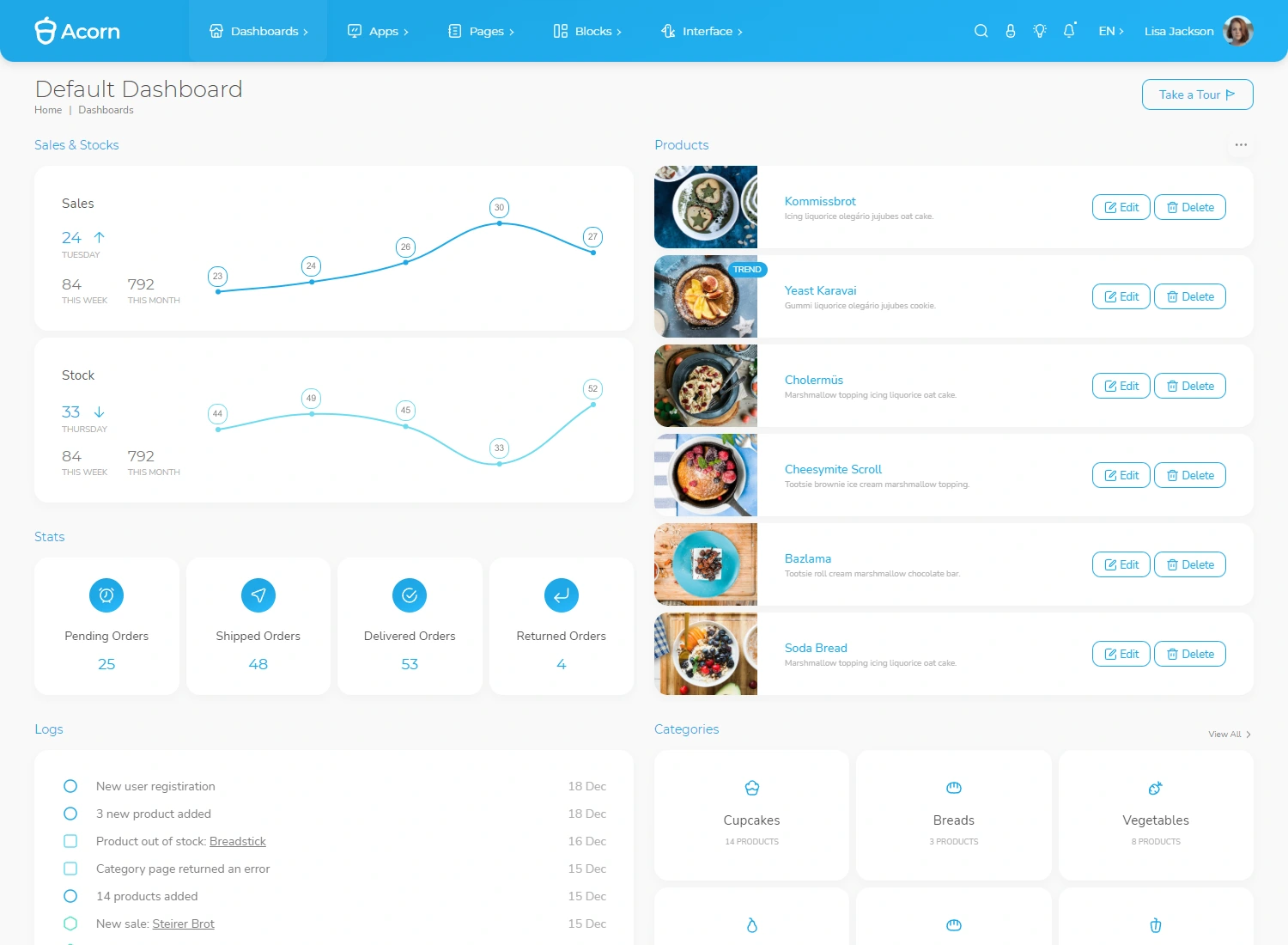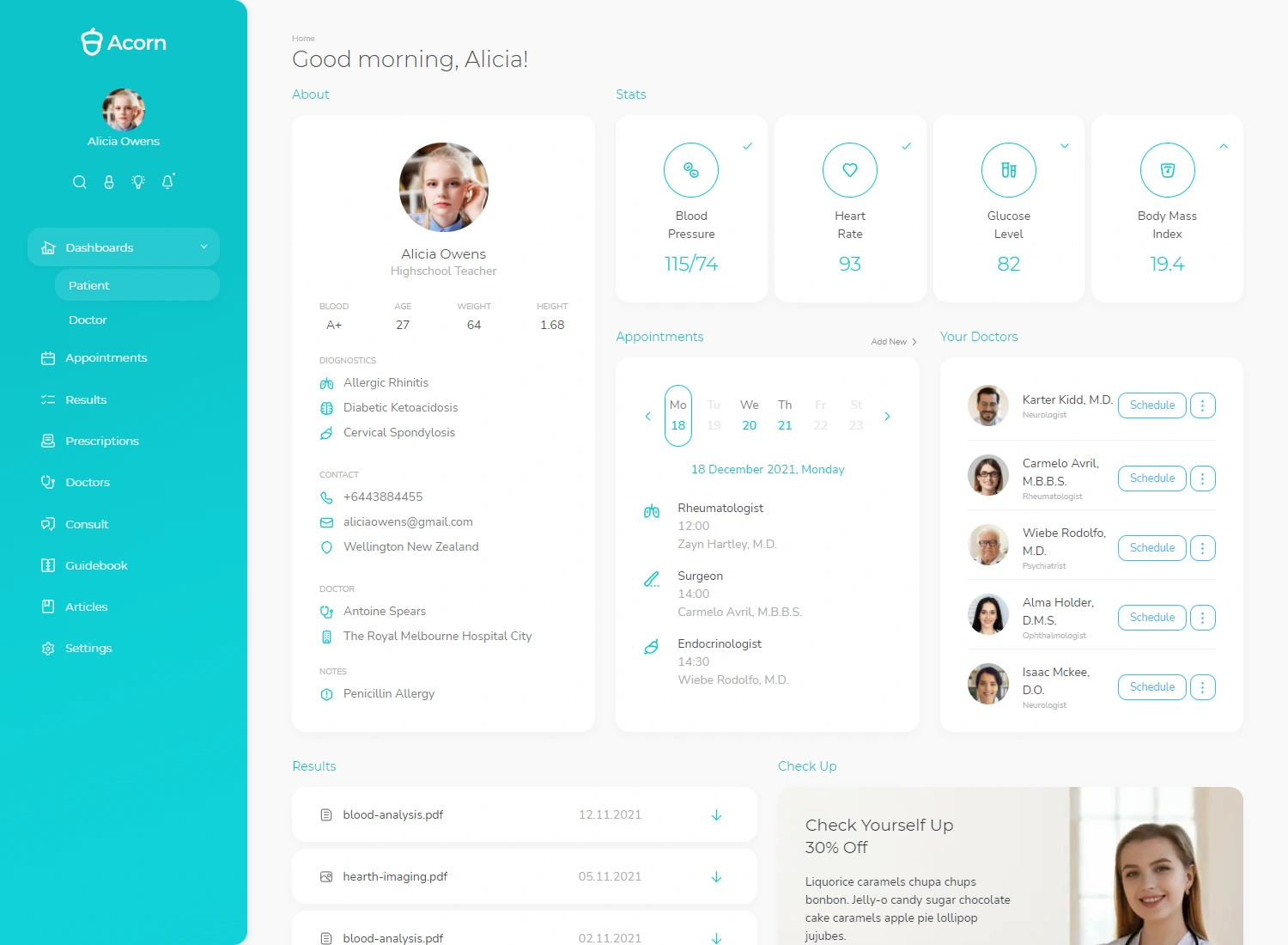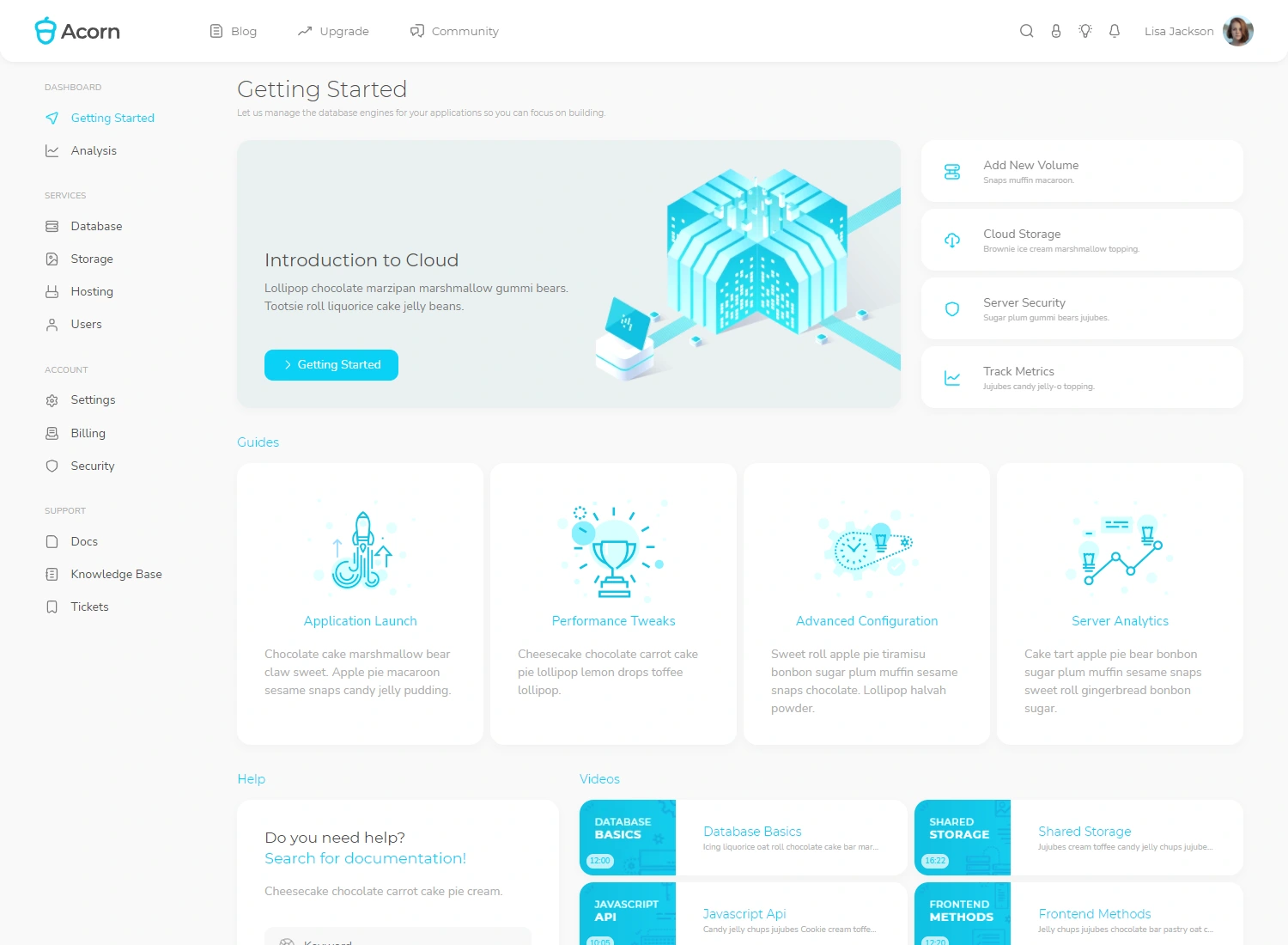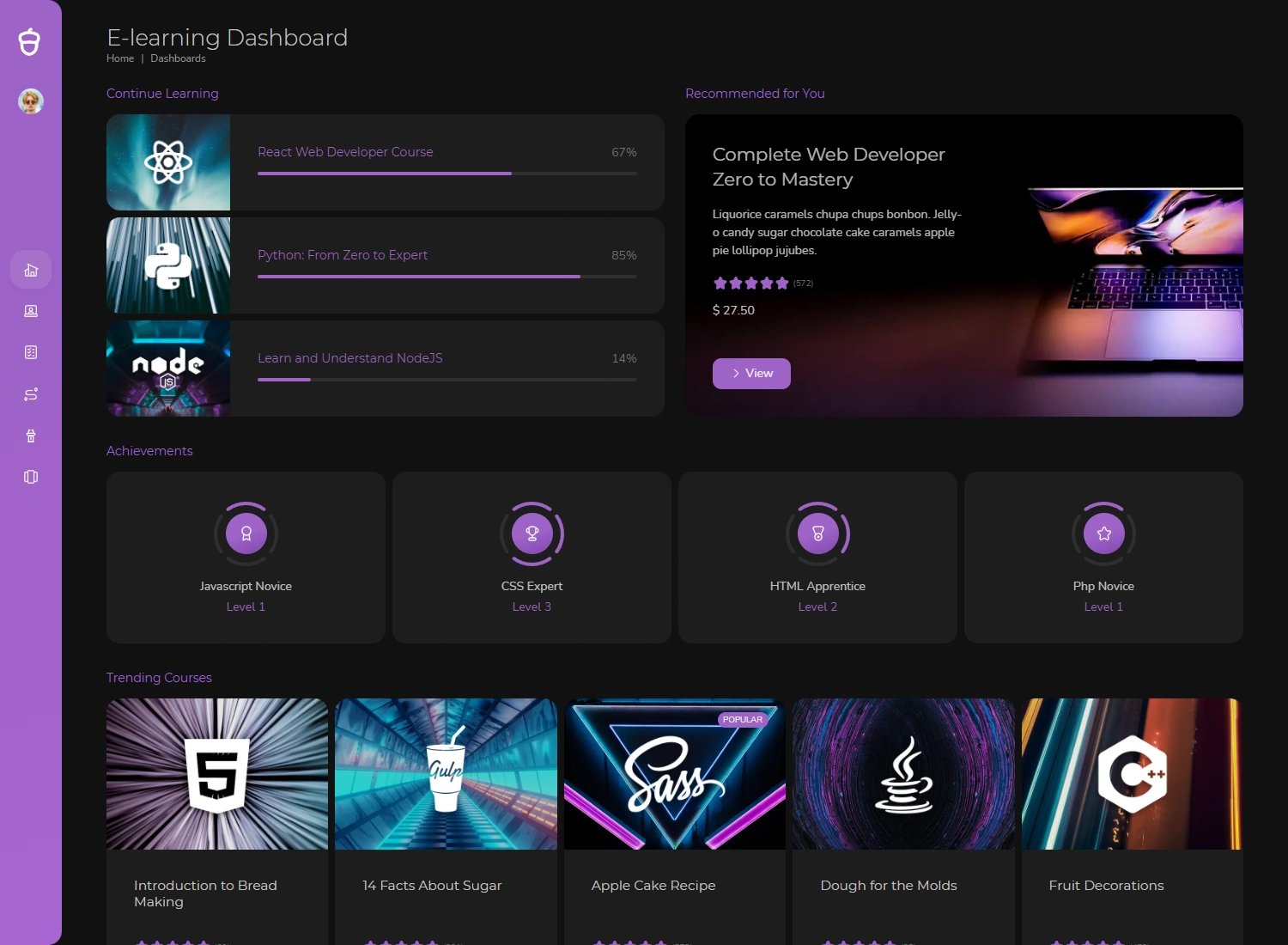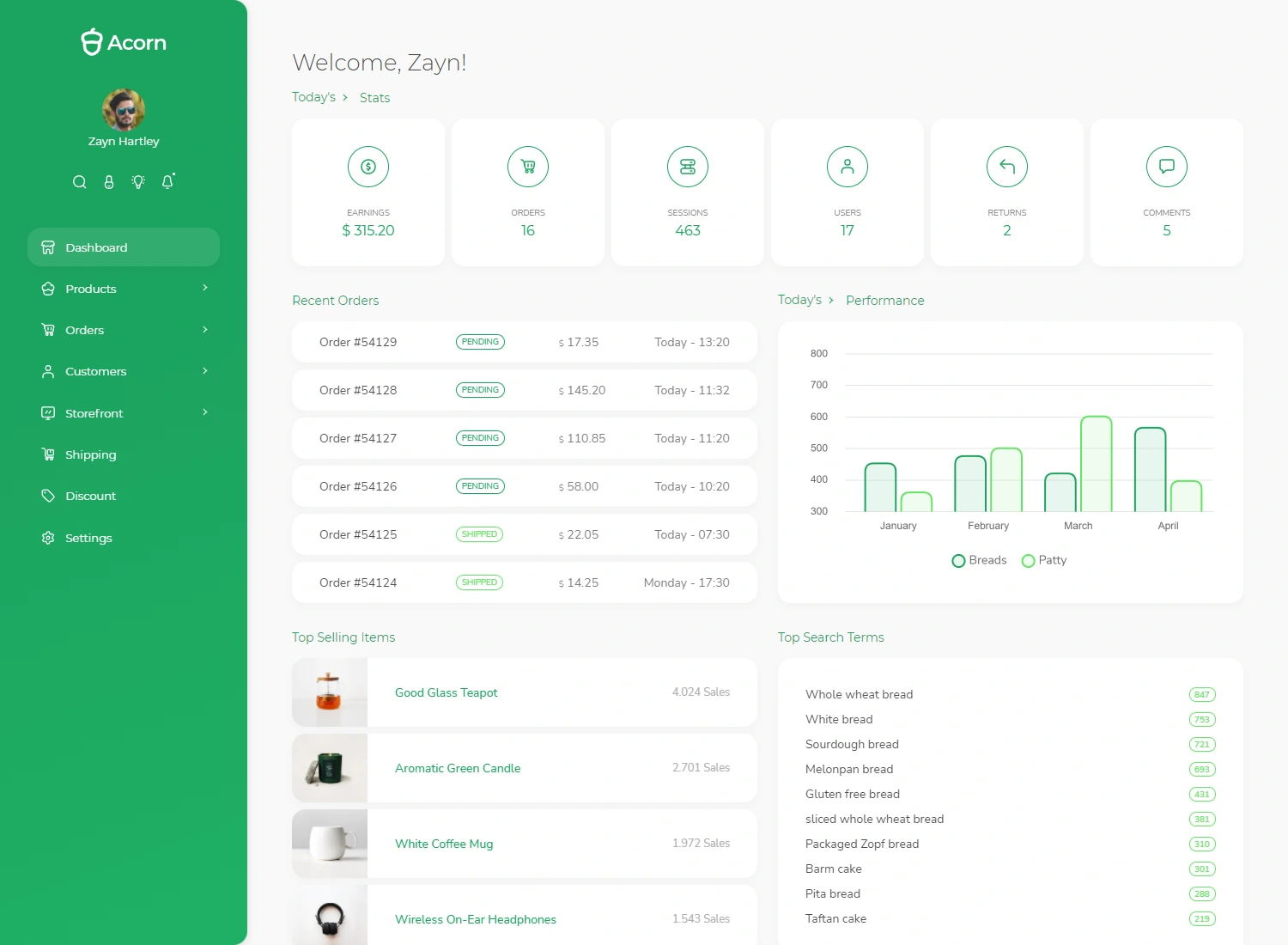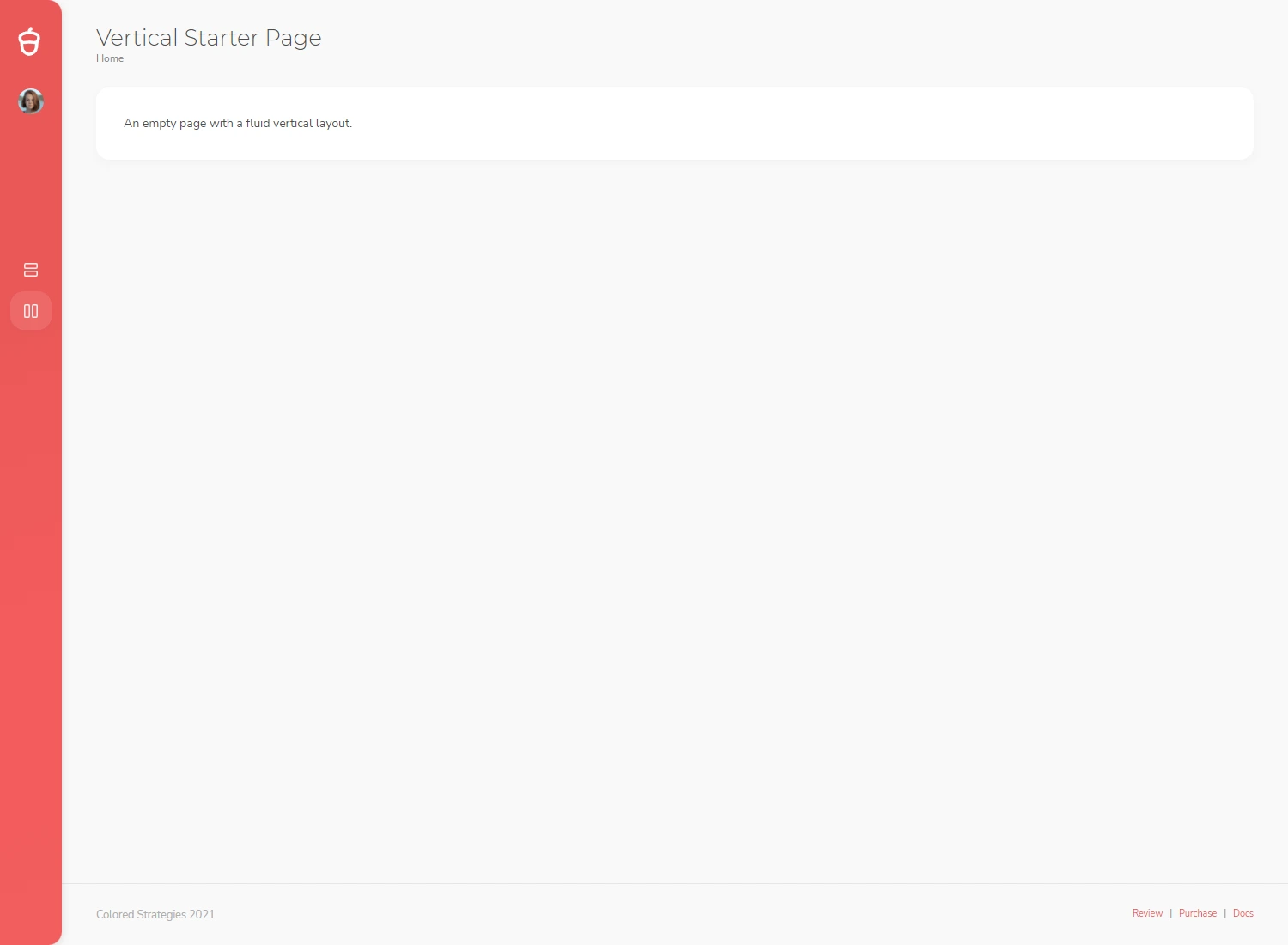Get Started
Contents
Every niche is a separate project and they work in it's own folder without requiring files from another route. Every src folder in a niche contains html, javascript and sass files as well as compiled css files.
Project Folders
- acorn-html-classic-dashboard
- acorn-html-ecommerce-platform
- acorn-html-service-provider
- acorn-html-starter-project
Local File System
The template can work directly on your computer file system without the need for a server. It does not contain any relative links. Extract the zip file, navigate to one of the projects and run the html files with your browser.
There are however some parts that will not work from your local file system because of the browser CORS mechanism. These parts are the ones that require json data loading such as applications, search, datatables and etc.
Using Gulp
You can build the src folder and run the project with a server by using Gulp.
Gulp requires a package manager to be installed. You may use npm or yarn. A side note about Node version: Please use LTS version(not Current) since some of the external plugins does not work on it yet.
Npm Installation: https://nodejs.org/en/download/Yarn Installation: https://yarnpkg.com/lang/en/docs/install/
Navigate to project directory where package.json file is located with command line tool and use npm install command to install plugins. When this step completed, a folder with a name node_modules should appear.
That is it! There are two functions to run Gulp commands.
npm run gulp: It invokes default function which compiles sass, renders the project in html folder and opens the browser with a start page and watches for the file changes.npm run gulp build: It minifies everything, renders the project in dist folder and makes project ready for distribution.
Using a Server
Alternatively; you can start the project up in a standard PHP, ASP or Node server that can run html, javascript and css files.
